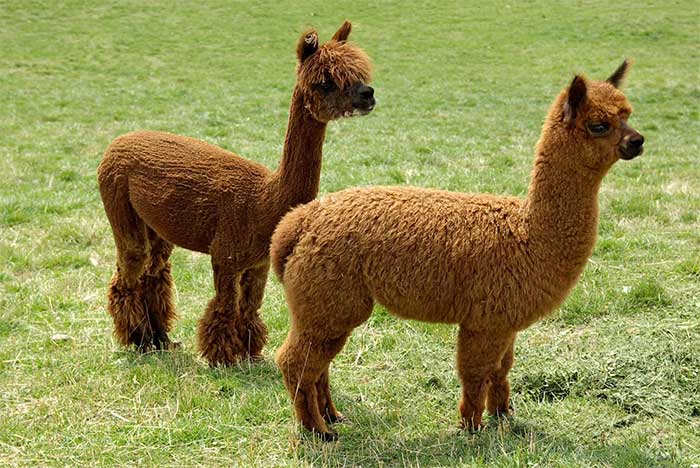H5N1 avian influenza was first detected in camels in the US
On May 28, US officials said for the first time they recorded cases of infection with the highly pathogenic H5N1 avian influenza virus in alpacas - a member of the South American camel family - on a farm in this country.

Alpaca.
This announcement was made in the context that bird flu is spreading in many dairy farms in the US and recently recorded 2 cases of bird flu in humans.
According to the US Department of Agriculture, the farm discovered that camels had bird flu in the northwestern state of Idaho. This is also the farm where infected poultry were treated and destroyed this month. The US Department of Agriculture said this is the first time the H5N1 avian influenza virus has been detected in this camel species .
In recent weeks, authorities have detected cases of the H5N1 bird flu virus in more than 50 animals in the US, including dairy cows. On May 22, US health officials announced the discovery of a second case of bird flu in humans in Michigan, less than two months after discovering the first case in Texas.
In March, US authorities discovered cases of virus infection in cows and goats. This surprised experts because this species is not thought to be susceptible to the H5N1 influenza strain.
Although no cases of human-to-human transmission have been recorded so far, experts are concerned about the possibility of the virus mutating into a form that can spread between people.
- WHO detected H5N1 influenza virus in cow's milk
- China detected an influenza A / H5N1 outbreak near Wuhan
- H5N1 avian influenza virus
- WHO announces the study of variant H5N1 avian influenza virus
- Bird flu has appeared in Antarctica
- Scientists react because of lack of avian flu data
- Vietnam successfully studied influenza A / H5N1 vaccine and influenza A / H1N1
- Appeared new outbreak of H5N1 bird flu in Quang Ninh province
- Deadly virus strain from poultry becomes a new pandemic concern
- Wild birds could be the cause of bird flu in China
- 100% of people infected with H5N1 in 2009 died
- The discovery of five mutations in H5N1 determines the spread
 March 2012: Launching H5N1 vaccine for poultry
March 2012: Launching H5N1 vaccine for poultry Experts comment on the mysterious gradual disappearance of the Delta variant in Japan
Experts comment on the mysterious gradual disappearance of the Delta variant in Japan Danger of the two Delta . branch variants
Danger of the two Delta . branch variants 2020 pandemic flu attack humans?
2020 pandemic flu attack humans? Mysterious epidemic in Congo, Ministry of Health outlines response measures
Mysterious epidemic in Congo, Ministry of Health outlines response measures  The world has only recorded 100 cases of women with skin diseases
The world has only recorded 100 cases of women with skin diseases  Infections caused by flesh-eating bacteria spread at record levels in Japan
Infections caused by flesh-eating bacteria spread at record levels in Japan  Detecting the second strain of monkeypox virus that is spreading fast
Detecting the second strain of monkeypox virus that is spreading fast  Unbelievable story: An American pilot who died in World War II is reincarnated after half a century
Unbelievable story: An American pilot who died in World War II is reincarnated after half a century  Occurrence of hepatitis of unknown origin in children in 11 countries
Occurrence of hepatitis of unknown origin in children in 11 countries 